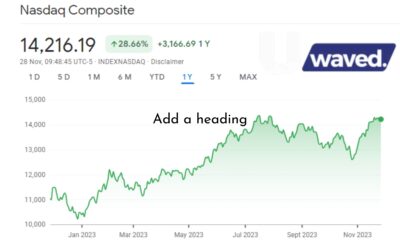Business
Understanding the Role of Criminal Background Checks in Modern Employment Strategies

Key Takeaways
- Criminal background checks are central to maintaining a safe and trustworthy work environment.
- Adherence to legal guidelines such as the FCRA and EEOC is essential in background screening.
- Emerging trends in technology and globalization are shaping the future of criminal background checks.
What Are Criminal Background Checks?
A criminal background check is a cornerstone practice for employers aiming to establish a secure workplace and uphold high standards of safety and integrity. Such checks delve deep into a candidate’s past and highlight any criminal records that might raise red flags or pose a potential threat within a corporate context. The primary goal is not only to identify risks preemptively but also to foster a workplace wherein trust is built into the very fabric of the corporate culture. A thorough background assessment can include various levels of investigation, from local misdemeanors to more extensive federal criminal records, providing employers with a comprehensive view of an applicant’s history. The relevance of these background checks extends far beyond merely flagging past criminal behavior. In our information-driven age, a criminal background check may offer insights into one’s character by revealing patterns or behaviors that could potentially align or conflict with a company’s values and expectations. Employers conducting these screenings must walk a tightrope of due diligence, ensuring each check respects privacy rights while protecting the business’s and its stakeholders’ interests. In this balancing act, legal ordinances and guidelines play a pivotal role. Organizations must be fully versed in the stipulations of laws such as the Fair Credit Reporting Act (FCRA) and adhere to the best practices outlined by institutions such as the Equal Employment Opportunity Commission (EEOC). These checks guide employers in respectfully and responsibly exercising their right to vet potential employees, as supported by the legal considerations for employers laid out by government agencies.
The Benefits of Implementing Background Checks for Employers
Security and safety within the workplace stand as paramount concerns for employers. Conducting criminal background checks is a practical approach to addressing these concerns, offering valuable insights that could prevent future incidents that may compromise the well-being and security of personnel and clients. This precautionary practice acts as a filter to flag individuals who may have exhibited behaviors in the past that would deem them unfit for specific roles, especially those that require a high degree of trust and ethical conduct. The hiring process becomes more robust, thus forestalling events that could tarnish the organization’s reputation and disrupt the work environment. Furthermore, the strategic implementation of background checks signals current employees and the public that the organization is committed to operating with integrity and due diligence. This level of transparency and accountability can enhance the company’s profile in the eyes of consumers and prospective, high-quality employees. Additionally, a discreet and ethical approach to criminal background checks can lead to a more inclusive hiring process, as it prompts companies to consider the context and relevance of any findings rather than making swift, potentially discriminatory judgments. Such an approach underscores the value of second chances and can diversify and strengthen the talent within the organization.
Navigating Legal Compliance in Criminal Background Screening
The intersection of background screening with an individual’s privacy rights mandates a careful, meticulous approach guided by clear-cut legal standards. Among the primary regulatory bodies influencing this domain are the Fair Credit Reporting Act (FCRA) and the Equal Employment Opportunity Commission (EEOC). The FCRA imposes specific requirements upon employers, including obtaining the candidate’s consent before conducting a background check, ensuring the accuracy of the information obtained, and following set procedures if the information influences hiring decisions. Employers also must be vigilant about adhering to the EEOC’s guidelines, which aim to prevent discrimination in the workforce. Fulfilling these legal requirements demands rigorous adherence to procedures and access to up-to-date information regarding any changes in the law. Ignorance of the latest amendments or complacency in implementing established practices can render an organization vulnerable to legal repercussions, including costly lawsuits. A strategic approach often involves partnering with reputable external agencies that specialize in conducting background checks with an awareness of current legal peculiarities. By doing so, businesses protect themselves from potential litigation and demonstrate a commitment to ethical business practices.
Addressing Common Misconceptions About Criminal Background Checks
Myths surrounding criminal background checks can pose significant barriers to effective implementation and might deter well-qualified candidates from pursuing opportunities. Among the most prevalent misconceptions is the notion that any criminal history will automatically disqualify a candidate from consideration. Reality paints a more nuanced picture. Employers are increasingly encouraged to evaluate the circumstances and relevance of the record to the job in question. This allows for holistic decision-making that factors in rehabilitation, the nature of the offense, and the time elapsed since the incident. Additionally, privacy concerns are often voiced. A properly conducted background check should always be carried out with the full consent and awareness of the individual in question, thus safeguarding their privacy rights. Beyond this, employers are responsible for carefully handling sensitive information, ensuring it is used solely for hiring decisions. By adopting a transparent approach and respectfully addressing potential negative findings, employers can maintain a fair hiring process that respects the dignity of all applicants.
Integrating Background Checks with Broader Hiring Strategies
Criminal background checks should seamlessly integrate within a broader, strategic hiring framework for maximum efficacy. This means they are just one part of a suite of tools for evaluating candidates, including interviews, skill assessments, and reference checks. Employers can enhance their hiring methodologies by ensuring that background checks are not isolated assessments but complement a comprehensive evaluation process.
Communication about background check policies should be clear and consistent from the onset of the hiring process. Prospective candidates should be fully informed of what the checks entail and how the results could affect their employment opportunities. Transparent communication fosters trust and openness, contributing to a higher degree of engagement and confidence among job applicants. This transparency extends to technology executing background checks, allowing for a more streamlined and efficient process that candidates can easily navigate.
The Candidate Perspective: Preparing for a Criminal Background Check
From a candidate’s viewpoint, the prospect of undergoing a criminal background check can be intimidating, especially for those with records they fear may impede their job prospects. Understanding their rights under the FCRA and preparing for the process can alleviate some of this apprehension. The key is that candidates know they have the right to be informed about the background check, consent to it, and dispute any inaccuracies that arise. They should also be coached on articulating context around adverse findings, providing clarity, and mitigating concerns from potential employers. Equipping candidates to handle this step can result in a more open, positive recruitment process.
Ethical Considerations in Criminal Background Checks
While ensuring the safety and security of a workplace, employers must wrestle with the ethical dimensions of conducting background checks. Respecting applicants’ privacy and handling their personal information with integrity is paramount. Employers must balance the need for thorough vetting and honoring the respect and dignity owed to every candidate. A transparent and considerate approach, where candidates know what to expect and the information is used conscientiously and fairly, can help surmount these ethical challenges.
The Future of Criminal Background Checks
The realm of background checks is poised on the cusp of significant change, spurred by technological advancements like artificial intelligence (AI) and machine learning. These technologies introduce new levels of accuracy and efficiency into the screening process, reducing human error and potentially speeding up hiring timelines. As these tools evolve, continuous vigilance on their ethical implementation and regulation compliance will become crucial for employers. Updating policies to accommodate these innovations while maintaining a human-centered approach in the hiring process will be critical to their successful integration.
Conclusion: Building a Safer, More Trustworthy Workforce
In conclusion, the efficacy of criminal background checks arises from their ability to offer deeper insights into the potential risks associated with hiring individuals with specific backgrounds. When executed with legal diligence and ethical consideration, these checks are potent tools for building safer, more trustworthy teams. The landscape for background screening is ever-evolving, demanding adaptability and continuous learning from today’s employers. Organizations committed to these principles will find themselves well-equipped to enhance their hiring processes, secure their environments, and foster the growth of an integrity-driven workforce.
Business
Digital PR and Link Building: What They Are, Differences, Characteristics, and Objectives

In the realm of online marketing, the terms “digital PR” and “link building” are commonly used, representing two important strategies in this field.
Digital PR is a marketing strategy aimed at enhancing the online visibility of a company or brand through managing relationships with digital media, bloggers, influencers, and other online figures. Link building is an SEO (Search Engine Optimization) strategy focused on acquiring high-quality links from other websites to one’s own site. These two strategies often overlap, as obtaining links from authoritative sources can also be an objective of digital PR. For both strategies, platforms like SeoLuxury.com can be used, offering an all-in-one tool to improve search engine rankings. Through the platform, you can find websites to propose your content to or use their expert copywriters for content creation if preferred.
What is Link Building and How to Do It
Link building is an SEO strategy that aims to obtain links from other websites to one’s own site to improve search engine rankings. Inbound links (backlinks) from authoritative and relevant websites can increase the authority of your site and help improve its visibility in search results (the SERP, Search Engine Results Page). The first phase of link building involves finding websites from which you can obtain backlinks. These sites should be relevant to your niche or industry and possess online authority. One of the best ways to obtain backlinks is to create high-quality content, such as informative and interesting guides, articles, infographics, or original studies for the target audience. Track obtained backlinks to ensure they are high quality. Additionally, diversify your link building strategy to maintain natural and credible backlinks in the eyes of search engines. Link building requires time, patience, and a strategic approach, but if done correctly, it can help improve your website’s visibility and search engine rankings in the long term.
Digital PR: What It Is, How It Works, Strategies, and Objectives
Digital PR, short for “Digital Public Relations“, is a marketing strategy that focuses on managing relationships and creating positive online visibility for a company, brand, or individual through the use of digital platforms and social media. The main objective of Digital PR is to build and maintain a strong online reputation and promote brand awareness. It involves managing relationships with digital media, online journalists, bloggers, influencers, and the online public. Digital PR experts aim to establish positive connections with these stakeholders to gain media visibility. Creating interesting, informative, or engaging content, such as press releases, articles, blog posts, videos, and infographics, is fundamental to Digital PR.
Digital PR specialists actively seek opportunities for online media coverage. They send press releases, articles, or contributions to online editors and journalists, hoping they will be published or mentioned in their articles. Digital PR requires constant monitoring of online reputation, meaning the image and perception of the company or brand on the web. Digital PR is essential for building and maintaining a positive online reputation, developing public trust, and improving online visibility.
Business
Exploring the Companies that satisfy sanpo yoshi : Companies Striving for Triple Goodness

Introduction:
In a world where profit often takes precedence, a concept like Sanpo Yoshi emerges as a refreshing paradigm shift. Rooted in Japanese philosophy, Sanpo Yoshi translates to “three-way satisfaction,” emphasizing the harmony and balance between the seller, the buyer, and society. It goes beyond the conventional understanding of business success, advocating for mutual benefit and sustainability. In this comprehensive article, we delve into the essence of Sanpo Yoshi, its principles, and the companies that exemplify its ethos.
Understanding Sanpo Yoshi:
Sanpo Yoshi embodies the holistic approach to business, aiming to benefit not just the company and its customers but also society at large. It encompasses three key stakeholders:
- The Seller:
- The company or the seller must benefit from the transaction, ensuring profitability and sustainability. However, this benefit should not come at the expense of others involved.
- The Buyer:
- Customers should receive value for their money, including quality products or services, fair pricing, and excellent customer service. Their satisfaction is integral to the concept of Sanpo Yoshi.
- Society:
- Beyond the immediate transaction, Sanpo Yoshi considers the broader impact on society. This includes environmental sustainability, social responsibility, and contributions to the community’s well-being.
Principles of companies that satisfy sanpo yoshi:
- Mutual Benefit: Sanpo Yoshi emphasizes win-win situations where all parties involved derive value and satisfaction from the transaction. This principle fosters long-term relationships built on trust and collaboration.
- Sustainable Practices: Companies practicing Sanpo Yoshi prioritize sustainable business practices, minimizing negative environmental impact and ensuring the well-being of future generations.
- Ethical Conduct: Integrity and ethical conduct are fundamental to Sanpo Yoshi. Companies uphold honesty, transparency, and fairness in all their dealings, earning the trust and respect of stakeholders.
- Social Responsibility: Beyond profit-making, Sanpo Yoshi encourages companies to contribute positively to society. This may involve philanthropy, community development initiatives, or ethical sourcing practices.
Companies Embracing Sanpo Yoshi:
- Patagonia:
- Known for its commitment to environmental sustainability, outdoor apparel company Patagonia epitomizes the principles of Sanpo Yoshi. From using recycled materials in its products to donating a portion of its profits to environmental causes, Patagonia prioritizes the well-being of the planet alongside profitability.
- Toms:
- Toms revolutionized the concept of corporate social responsibility with its “One for One” model, where for every pair of shoes sold, a pair is donated to a person in need. This commitment to social impact resonates with the spirit of Sanpo Yoshi, where business success is measured not just in financial terms but also in the positive change it brings to society.
- Interface:
- As a leader in sustainable flooring solutions, Interface exemplifies Sanpo Yoshi through its Mission Zero commitment to eliminate any negative impact the company may have on the environment by 2020. Through innovative product design, waste reduction initiatives, and carbon-neutral operations, Interface demonstrates that profitability and environmental stewardship can go hand in hand.
- Ben & Jerry’s:
- Beyond crafting delicious ice cream flavors, Ben & Jerry’s is renowned for its social activism and commitment to progressive values. From advocating for climate justice to championing fair trade practices, the company aligns its business objectives with broader societal goals, embodying the spirit of Sanpo Yoshi.
Challenges and Opportunities:
While the concept of Sanpo Yoshi offers a compelling framework for businesses to operate ethically and sustainably, it is not without its challenges. Companies may face resistance from shareholders focused solely on short-term profits, logistical hurdles in implementing sustainable practices, and skepticism from consumers wary of greenwashing.
However, the opportunities presented by embracing Sanpo Yoshi are equally significant. Companies that prioritize triple goodness stand to gain a competitive edge by differentiating themselves in the market, attracting socially conscious consumers, and fostering loyalty and trust among stakeholders. Moreover, by aligning business objectives with broader societal goals, companies can contribute to positive social change and leave a lasting legacy beyond financial success.
Conclusion:
In a world increasingly characterized by inequality, environmental degradation, and social unrest, the principles of Sanpo Yoshi offer a beacon of hope and a blueprint for a more equitable and sustainable future. By prioritizing mutual benefit, sustainability, and social responsibility, companies can not only thrive financially but also make a meaningful difference in the world. As consumers, investors, and citizens, we have the power to support and champion businesses that embody the ethos of Sanpo Yoshi, shaping a world where prosperity is shared, and all stakeholders benefit.
YOU MAY ALSO LIKE;How2Invest: A Beginner’s Guide to Financial Success
FAQs:
- What does Sanpo Yoshi mean?
- Sanpo Yoshi is a Japanese concept emphasizing triple goodness—benefit for the seller, the buyer, and society—balancing profit with social responsibility.
- How do companies practice Sanpo Yoshi?
- Companies practice Sanpo Yoshi by prioritizing mutual benefit, sustainability, and social responsibility in their operations and decision-making processes.
- Can Sanpo Yoshi be applied to all industries?
- Yes, Sanpo Yoshi principles can be applied to all industries, as they emphasize ethical conduct, sustainability, and societal contributions, regardless of the sector.
- What are the benefits of embracing Sanpo Yoshi for companies?
- Embracing Sanpo Yoshi can lead to a competitive edge, increased consumer trust and loyalty, and positive societal impact, fostering long-term success and sustainability.
- How can consumers support companies practicing Sanpo Yoshi?
- Consumers can support companies practicing Sanpo Yoshi by choosing their products or services, advocating for ethical business practices, and engaging in responsible consumption.
Business
How2Invest: A Beginner’s Guide to Financial Success

Putting away cash can appear to be an overwhelming undertaking, particularly for those new to the universe of finance. Notwithstanding, with the right direction and a reasonable comprehension of the fundamentals, anybody can leave on an excursion to financial accomplishment through essential ventures. In this article, we’ll separate the essential center catchphrase, [how2invest], and investigate key viewpoints that will assist you with exploring the universe of finance management with certainty.
Understanding the Basics of Investing
Putting your finance to use to make more finance over time is what investing is all about. It’s a method for developing your riches and accomplish financial objectives. Prior to diving into explicit methodologies, accepting the basic concepts is essential.

Hazard and Return: All ventures accompany some degree of chance, however understanding the connection among hazard and potential return is indispensable. By and large, better yields are related with higher gamble.
Diversification: Spreading your speculations across various resources limits risk. Expansion can incorporate a blend of stocks, securities, land, and other speculation choices.
Time Skyline: Consider how long you intend to contribute prior to requiring the assets. A more extended time skyline considers a more forceful methodology, as transient market changes have less effect after some time.
Setting Financial Goals
Prior to entering the world of investments, it is essential to identify your financial objectives. Your investment strategy will be shaped by clear objectives, such as saving for a home, funding education, or building a retirement fund. Ask yourself.
Momentary versus Long haul Objectives: Various objectives might require different speculation draws near. Transient objectives could focus on steadiness, while long haul objectives could take into consideration more development arranged speculations.
Risk Resistance: Comprehend your solace level with risk. Moderate financial backers might incline towards okay choices, while those OK with hazard might pick more forceful procedures.
Teach Yourself on Venture Choices
There are different venture choices, each with its own gamble and bring profile back. Here are some normal speculation vehicles.
Securities exchange: Putting resources into individual stocks or trade exchanged reserves (ETFs) permits you to claim a portion of an organization. Consider a diversified strategy, comprehend market trends, and research companies.
Bonds: Bonds are obligation protections gave by state run administrations or enterprises. They typically have a lower risk profile than stocks and provide fixed interest payments over time.
Real Estate: Real Estate can turn out both revenue and possible appreciation. Consider investment properties, real estate investment trusts (REITs), or land crowdfunding.
Make a Broadened Speculation Portfolio
Building an even and broadened portfolio is critical to overseeing risk. An enhanced portfolio spreads speculations across various resource classes, diminishing the effect of lackluster showing in any one venture. Think about the following.
Assignment of Assets: Choose how to circulate your ventures among stocks, bonds, and different resources in view of your objectives, risk resilience, and time skyline.
Ordinary Rebalancing: Maintain the desired asset allocation by periodically reviewing and adjusting your portfolio. This guarantees that your ventures line up with your objectives and chance resilience.
Remain Informed and Screen Your Speculations
The financial business sectors are dynamic, and remaining informed is urgent for fruitful contributing. Foster beneficial routines to keep your ventures on target:
Consistent Learning: Remain informed about market patterns, financial pointers, and any progressions in your speculations. This information will engage you to settle on informed choices.
Routinely Survey Your Portfolio: Occasionally evaluate your portfolio’s presentation and make changes on a case by case basis. You might want to think about speaking with a financial advisor for specific advice.

Conclusion:
Leaving on your venture process with the [how2invest] mentality includes figuring out the rudiments, laying out clear objectives, investigating different speculation choices, making a broadened portfolio, and remaining informed. You’ll be better able to navigate the complicated world of finance and work toward achieving your financial goals if you follow these steps. Keep in mind, contributing is a drawn out responsibility, and persistence is a temperance chasing financial achievement.
FAQs
What is the most effective method for beginning investors?
For amateurs, the most effective way to begin finance management is by grasping the essentials. Find out about chance and return, broadening, and your time skyline. Put forth clear financial objectives, recognize your gamble resistance, and teach yourself on various venture choices. To establish a solid foundation for profitable investing, it is essential to construct a diversified portfolio that is in line with your objectives.
How might I decide my gamble resistance prior to finance management?
Assessing your comfort level with the possibility of financial loss is one way to determine your risk tolerance. Think about your financial objectives, time skyline, and profound versatility. In the event that market changes makes you uncomfortable, a more safe methodology might be reasonable. Then again, on the off chance that you can endure transient market unpredictability, a more forceful methodology could line up with your gamble resilience.
What are the best venture choices for somebody with a generally safe resistance?
People with an okay resilience might incline toward venture choices that focus on solidness. Consider dispensing a part of your portfolio to okay resources, for example, government securities, great corporate securities, or profit paying stocks. Enhancement stays pivotal, in any event, for moderate financial backers, to limit the effect of terrible showing in any single venture.
How frequently would it be a good idea for me to survey and change my speculation portfolio?
Consistently evaluating and changing your venture portfolio is fundamental for remaining focused. Mean to audit your portfolio every year, or all the more as often as possible in the event that there are critical market changes or life altering situations. Rebalancing, or changing your resource portion, guarantees that your ventures line up with your objectives and hazard resistance over the long run.
Is it important to recruit a financial counselor for effective finance management?
While it’s not obligatory, employing a financial counselor can be useful, particularly for those new to effective financial planning. A financial counselor can give customized direction, assist you with laying out practical financial objectives, and deal systems to accomplish them. In the event that you favor an involved methodology, adequate self-training and research can engage you to go with informed speculation choices all alone.
-

 Technology8 months ago
Technology8 months agoBoosting Customer Engagement Through App Loyalty Programs
-

 Blog9 months ago
Blog9 months agoMaterialistic Princess Spoilers Complete Story 2024
-

 Blog9 months ago
Blog9 months agoThe Rich Culinary Heritage of Cassasse: A Delightful Journey into a Cultural Dish
-

 Technology10 months ago
Technology10 months agoGeekzilla Podcast: A Remarkable Journey into Geek Culture
-

 Technology8 months ago
Technology8 months agoWhat is Geöe? All You Need to Know in 2024
-

 Blog9 months ago
Blog9 months agoUnveiling the Delightful World of Pollaste: A Culinary Journey
-

 Blog7 months ago
Blog7 months agoUnveiling the History of Buší: A Traditional Delicious Dish
-

 Business9 months ago
Business9 months agoIndexnasdaq: .ixic: Latest Quotes, Charts, and Insights 2024





















